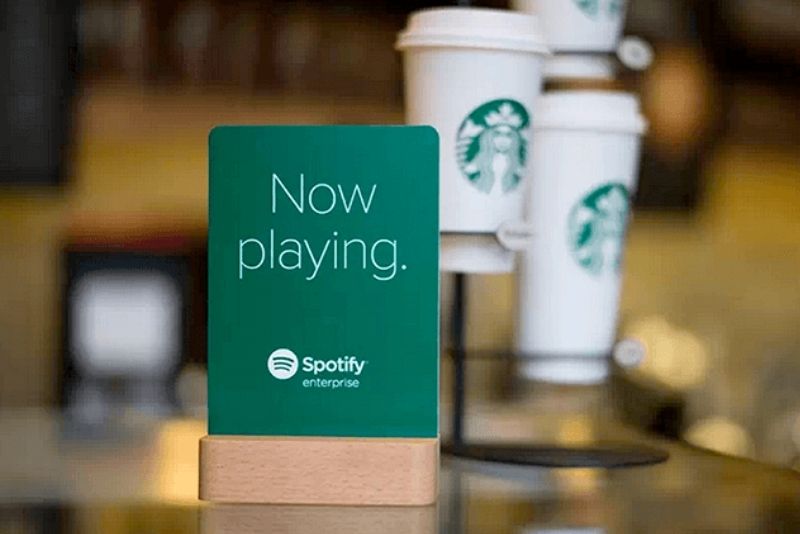For a long time, companies like Starbucks and Google, Spotify and Uber, and McDonald's and Coca-Cola have been collaborating for mutual gain in order to build a lucrative future. A strategic collaboration between parties, whether it is two firms or a business, and an individual, such as an opinion leader or an influencer, is known as partner marketing (also known as partnership marketing).
This article shall cover the examples of successful marketing partnerships and the effective partnership marketing strategy for your brand.
Example of Marketing Partnerships

Spotify and Uber partnership
Uber and Spotify: Uber and Spotify teamed together for a great co-marketing campaign a few years ago. A pre-made Spotify music would start once an Uber subscriber entered their ride. This collaboration resulted in a wonderful consumer experience. And both brands met the highest CX criteria, delighting their common customers.
Eddie Bauer and Ford: The carmaker teamed up with the apparel behemoth to generate new advertising chances for both businesses. Eddie Bauer products like baggage were branded with the Ford emblem, and select Ford automobiles were furnished with premium Eddie Bauer features like leather seats.
Burger King & Sony PS5: This is one of the best examples of co-marketing I've ever seen. Burger King collaborated with Sony PS5 to offer sweepstakes. Simply upload the receipt from your Burger King meal to enter the sweepstakes. To get that wonderful PS5 for gaming, many gamers would have eaten a lot of burgers.
Strategic partnership
1. Affiliate marketing

Affiliate marketing can boost sales of both partners
Affiliate marketing is a business relationship in which a firm rewards its affiliates for promoting and selling the company's products. This is a pay-per-performance arrangement, which means the partner is paid only when the intended activity — impressions, clicks, or sales — occurs. Bloggers, influencers, agencies, email marketers, PPC affiliates, coupon, and cashback websites are all common forms of affiliate partners.
2. Collaboration on distribution
When one company wishes to leverage another brand's enormous distribution network in exchange for a fee, they form a distribution partnership. Those products are usually directed at the same demographic. DJI drones sold at Apple stores are an example of such a partnership. Even if buyers wanting to buy a drone don't have an Apple device, the DJI target group and overall branding are so similar that it's considered advantageous.
3. Co-branding

Co-branding can pay off
Two brands collaborate on a new or enhanced product to bring added value to the customer in this marketing alliance. Apple and Nike, for example, released the Apple Watch Nike edition in 2016, which combines an existing Apple Watch with Nike sport bands and applications.
4. Influencer marketing

Influencer marketing can help brands to reach new customers
Influencers, by definition, have the ability to sway someone's purchasing decision. They don't have to be a member of a specific profession or have a significant following. They must, however, earn the support, trust, and respect of their audience. Actors, musicians, bloggers, YouTubers, and Instagrammers are all common influences today.
5. Resellers
Affiliates are sometimes mistaken for resellers or channel sales partners. Although these two forms of partnerships are identical at their heart, resellers are more active with the merchant and the product's deployment. In most cases, their primary function is to assist a merchant in getting a product to market.
6. Content marketing

Content marketing can boost your sales organically
Content marketing is an important aspect of practically any organization, and content partnerships are no exception. It's easier to describe content collaboration if you consider what it aims to accomplish. Regardless of how it was created or marketed, the end result is always a piece of marketing material that benefits both brands. Guest writing in return for backlinks is one example.
The downside of partner marketing strategy
Any technique has the potential to have downsides. There is always a danger of failure when entering into a partnership with a corporation or a person. Strategic collaborations necessitate a thorough understanding of each collaborator's obligations and the terms of the agreement. Building and managing relationships with partners become difficult without it. The golden rule is to treat your partner as you would want your team or organization to be treated. Not every partnership deal goes according to plan. While you can manage your own company processes and resources, you can't manage the other entity in the same manner. As a result, it's critical that your partnership contract contains all necessary facts and steps in the event of such unfavorable situations.

